- Safety Field Lab
- Innovation programs
Innovatieprogramma's Safety Field Lab
Where theory and practice come together...
Het Safety Field Lab ontwikkelde samen met haar partners verschillende innovatieprogramma's. U leest hier een aantal voorbeelden van deze programma's.
RED SUIT
Virtual simulation of real-life scenarios by the fire brigade
The fire brigade naturally prefers to train in as realistic conditions as possible. However, not all scenarios are easy to replicate. RED SUIT is specifically designed for the rehearsal of real-life scenarios in complex situations, yet in a virtual environment. Rather than sitting in front of a screen, firefighters get to move around with their standard equipment, just as they would in real life: Train as you fight the fire! We train in a variety of replicated environments, including tunnels, operating theatres and prisons. Real smoke, fire or gas is used to make the exercise as realistic as possible. This particular training concept can either be conducted on Safety Campus premises or at your own fire station. We need only a flat surface in order to bring a variety of virtual scenarios to life. RED SUIT also makes use of images and conversations to provide a detailed after action review.
RED SUIT feedback
Feedback from Twente fire brigade has been extremely positive:
- Technical competency is demonstrably improved; the exercise is the same for everyone and can be endlessly repeated.
- Identical conditions ensure a more effective evaluation.
- Participants are not exposed to hazardous substances.
- RED SUIT saves time by quickly switching between scenarios
- Delivers cost savings; you don’t use any water or fuel.
Interested? Click here to watch a film about RED SUIT.
MoSeS: Mobile Sensing for Safety
A lifesaver during incidents
During a fire or similar incident, it’s essential that operational supervisors know exactly where their crew are deployed and what their current state of health is.
The fire department utilises a variety of different (communication) systems and technologies. Yet, existing equipment doesn’t provide operational supervisors with real-time insight into the status and health of their crew. Complex buildings in particular, create dangerous situations. Current systems also depend on existing networks. As a result, their operation in places such as car parks is far from optimal.
Real time situational awareness
The Safety Field Lab is currently collaborating with Twente fire brigade and other partners[1] on a new system called MoSeS - Mobile Sensing for Safety (MoSeS). The technology harnessed by MoSeS not only makes it possible to pinpoint the exact position of personnel in real time; it also provides insight into their state of health.
Fire brigade safety
MoSeS is innovative in terms of technology, because it builds a network from actual mobile devices worn by the crew, yet without requiring GPS or Wi-Fi. MoSeS is therefore suitable for car parks and other concrete buildings where reception is typically poor. It’s the first and only system to harness mobile technology to facilitate the reliable retrieval of data from firefighters in a burning building. This goes beyond pinpointing their exact location. In fact, operational supervisors can now determine - via a smartphone or tablet - exactly how much breathable air a crew member has at their disposal, and what their current state of health is etc. The system also automatically sends an alarm when a crew member’s health is at risk.
This enables the emergency services, such as the fire brigade, not only to work more efficiently, but also more safely and repressively.
[1] Saxion, lectoraat Ambient Intelligence en Windesheim, lectoraat ICT-innovaties in de zorg. Ambient Systems, Demcon, Inertia Technology, Leap Development, Mobidot, NDIX, Smart Sign, Thales Nederland BV, Twente Institute for Mobile and Wireless Communications (TIOWMC), Universiteit Twente, Van der Molen Beveiligingstechniek en Veiligheidsregio Twente.
Instrumented training
Instrumented Training uses smart, innovative technology to monitor learning processes. It delivers analytical, quantitative information about human reactions and behaviour. The system provides real-time feedback and makes after-action reviews more effective and efficient. Sports and defence institutions already widely use Instrumented Training to measure individual and team performance, and the methodology can now be deployed in realistic disaster and risk training simulations. link to Troned training The data assimilated supplies useful information for evaluation and provides a clear picture of the trainee’s learning process. Troned link to Troned page intends to make increasing use of Instrumented Training in exercises and training.
Instrumented Training for improved learning performance (h2)
The FABCM[1] certified training program, 'front line command and control’, is suitable for all Operational Supervisors and Commanders. A FABCM-certified observer oversees qualitative data analysis and, using FABCM methodology, trainees gain valuable insight into which particular moments and specific situations operational leaders can make a difference. Now that procedures alone are no longer central to the program, training results have improved demonstrably. A combined use of smart technology and the innovative FABCM methodology, makes Instrumented Training truly unique. And the program is constantly being improved and refined - that way we’re able to make all ‘the difference’ in a crisis situation such as a fire.
In short, Instrumented Training boosts professional competence using smart technology link to Twente Safety Campus general information. This improves learning performance and delivers even more targeted training to the emergency services, including the police, fire brigade and defence institutions.
[1] Factfinding, Analysis, Decision Making, Communication, Monitoring
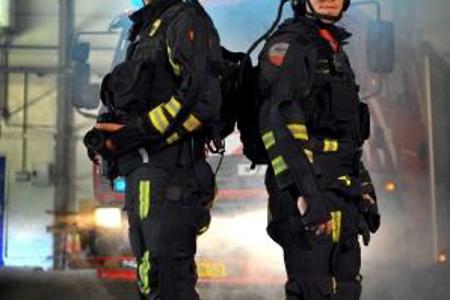
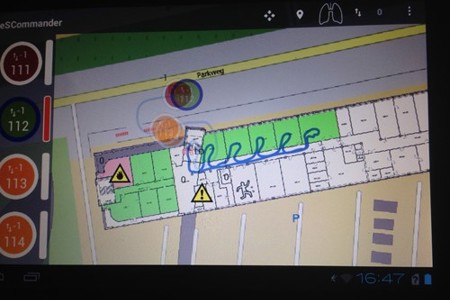
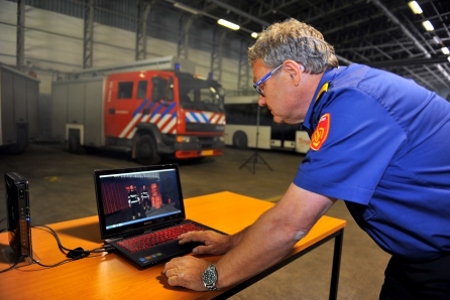
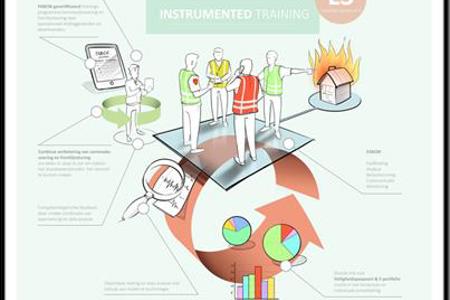
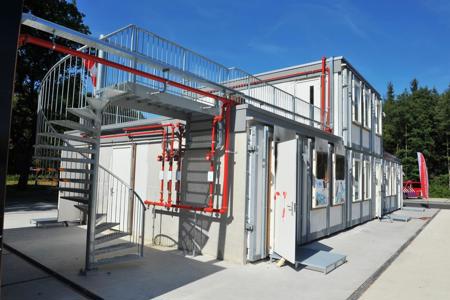
“Our unique alliance of partners delivers rapid results. The Safety Field Lab acts as a genuine ‘matchmaker’ and unites - often unexpected - parties for the resolution of specific safety issues.” At the Safety Field Lab, people and knowledge come together as one, generating new ideas and business opportunities.
Ymko Attema, Coordinator at the Safety Field Lab and teamleader Kenniscentrum Brandweer